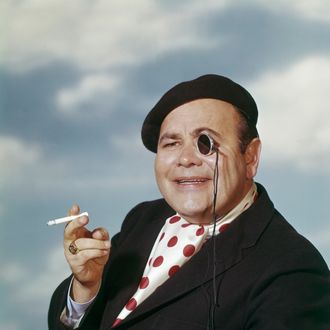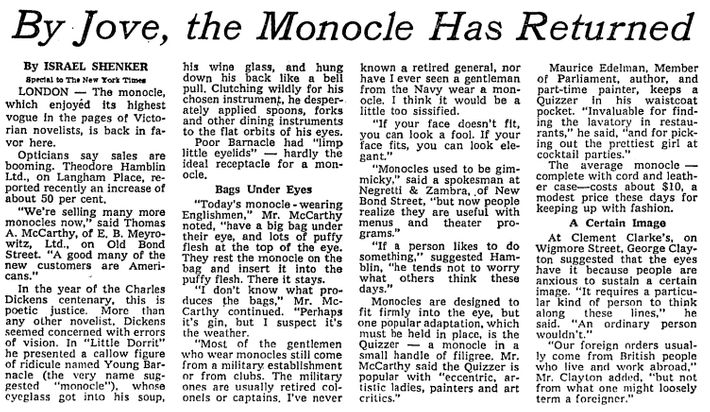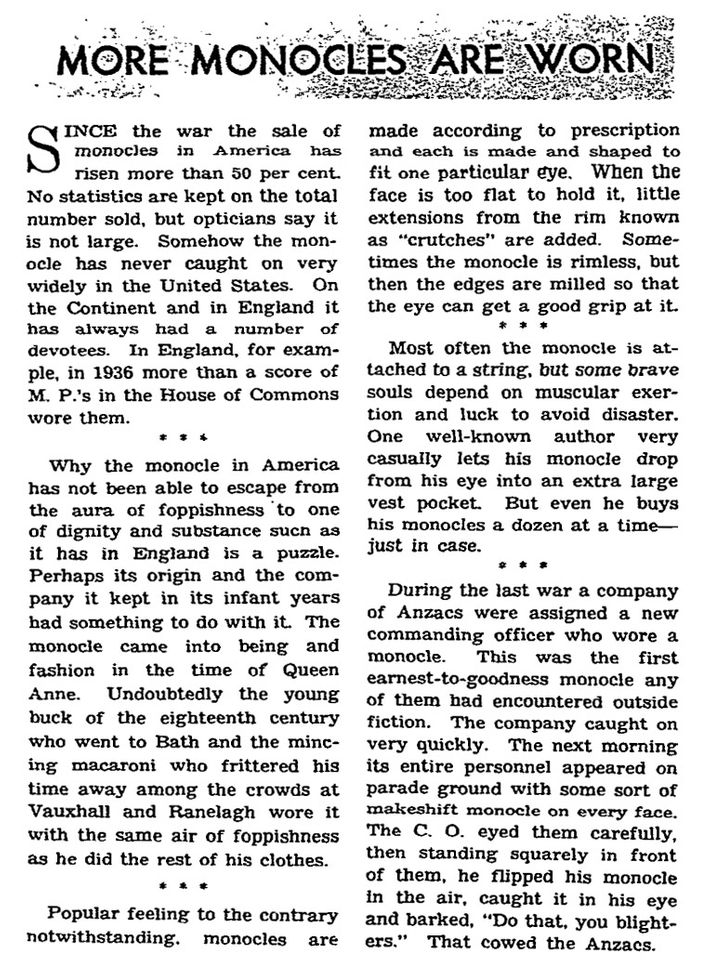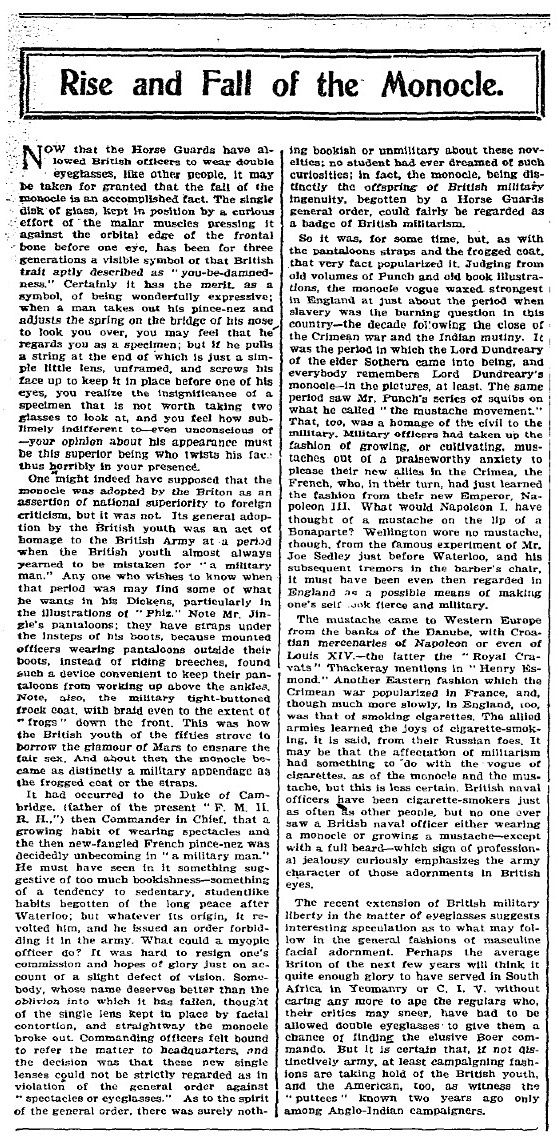
One “aspiring” Miami rapper and one photo of Alan Cumming, plus a few sightings at cafés in Berlin, were enough for the New York Times to declare today, “The Monocle Returns as a Fashion Accessory.” (“Monocles are hardly everywhere,” the full article admits.) But like the monocle itself, the Paper of Record’s coverage of the absurd eyepiece favored by Mr. Peanut goes way back. Digging through the Times archives, as Aaron Bycoffe and the latest story’s author Allen Salkin inspired us to do, turns up at least five previous attempts to define its trendiness, dating back to 1902. The monocle, one must conclude, is invincible.
Let us take a trip backwards through time, eyewear optional.
Forty-four years ago, the monocle was “back in favor here.” Declaring it “poetic justice” for Charles Dickens’s “centenary,” the Times reported, “If your face doesn’t fit, you can look like a fool. If your face fits, you can look elegant.”
“Monocles used to be gimmicky,” an expert argued, “but now people realize they are useful with menus and theater programs.”

In 1941, monocles were also back, up 50 percent since the war. “Why the monocle in America has not been able to escape from the aura of foppishness to one of dignity and substance such as it has in England is a puzzle,” the Times pondered.

In 1927, also back: “More monocles were sported at Meadow Brook yesterday than have ever been seen in captivity in the United States before.” (It was a polo match.)

The spin in 1904 was monocles for the ladies. Beneath the column, “Testimonial From a Slave,” forever mixing the high and low.

And finally, more than a century ago, the “Rise and Fall of the Monocle.” Buried in there, two other eternally ripe trend-piece topics: facial hair and cigarette smoking.

“What would Napoleon I have thought of a mustache on the lip of a Bonaparte?” the paper wondered. And later: “It may be that the affectation of militarism had something to do with the vogue of cigarettes, as of the monocle and the mustache, but this is less certain.” Who could be sure, really?
Going back even further, the New York Tribune reported in 1894, “The ‘monocle’ has gone out of fashion abroad; it is said that those who still cling to this ugly single glass might be counted on the finger of both hands.”
Then, as is often accused now, the Times was already late.





























